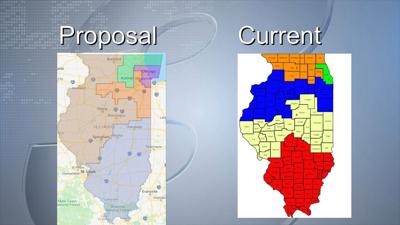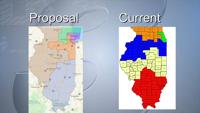(WSIL) -- The 2021 redistricting process in Illinois is set to be the most unique in state history.
A big reason comes from Democrats drawing proposed legislative maps without using 2020 Census , says John Jackson, a visiting professor at the Paul Simon Public Policy Institute.
Jackson says it's the first time in Illinois' redistricting process where state leaders didn't use census data. The pandemic pushed the release of those numbers until September.
MORE:
Instead, Democrats opted to draft the maps using the U.S. Census Bureau's American Community Surveys (ACS).
"The differences are minute between the 2019 [ACS] than what the 2020 Census would look like," Jackson said. "But that's the Democratic side of the argument."
Jackson says Republicans make a solid case of their own because Illinois normally uses census data to draw maps. Census data is not required by the Illinois constitution, Jackson notes.
But census data is the most accurate way to draw maps, says State Rep. Paul Jacobs (R-Pomona). Jacobs says using ACS data can create unfair maps that can hurt minority groups.
"It can't be 20% off, 40% off," Jacobs said. "It has to be much more accurate. The census data gives us that."
State Rep. Dave Severin (R-Benton), who is on the remap committee, says suggestions from Republicans went unheard. Severin hopes leaders can provide further clarity on the redistricting process.
"[People] have been waiting and asking for transparency and fair maps," Severin said. "It was very difficult to even read the boundary lines."
Democrats have also proposed a new map this week that aims to change the state's court district. It would be the first time since 1963 that Illinois saw a shift in its court districts.
RELATED:

State Rep. Patrick Windhorst (R-Metropolis), the former Massac County State's Attorney, says the move would complicate the court process because precedent follows the court.
"Redrawing district lines could potentially change precedent in a certain area of the state," Windhorst said.
If lawmakers can't agree on a map by June 30, they must form an eight-member commission, with four members of each party, no later than July 10. That commission would have to submit a map by August 10.
If no map is submitted by then, the Illinois Supreme Court would select two random members of different parties by September 1. The Secretary of State would then randomly draw one of the names to act as the ninth member of the commission.
That commission must send a finalized map by October 5 and must be approved by five members.














